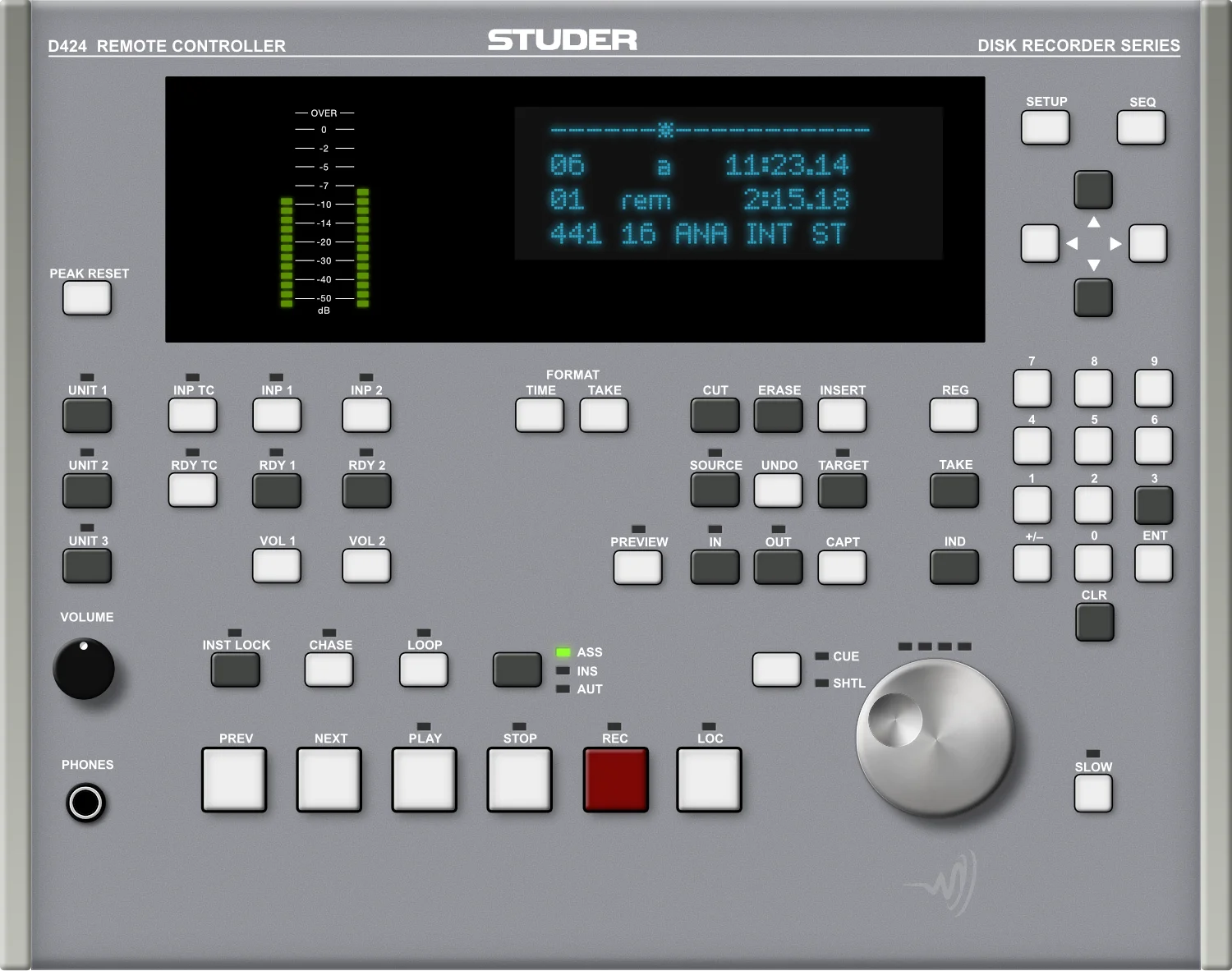The Studer D424 magneto-optical disk recorder is ideal for all broadcasting, recording studio, premastering and theater applications. As the logical operating concept and the functionality of the Studer D424 are based on the 2-channel tape machines, only a short familiarization time is required.
The advantages of ‘Random Access Technology’ such as high-speed access to locations with-in recordings is combined with an amazingly simple user interface. It offers not only standard functions such as record and play but also convenient and efficient editing with ‘Razor blade’ functionality of the type the user is already familiar with from tape machines.
The Studer D424 which incorporates the most advanced technology produces top quality, true-sound recordings in 16-, 20- or 24-bit format and features an operating system as well as a file system with an architecture that is open toward the PC and workstation platforms.
High data storage capacity
The Studer D424 uses ISO 51/4″ magneto-optical disks with capacities of 1.2 GB to 2.6 GB. Due to the optimized data structure, up to 75 minutes can be recorded at 48 kHz with 24-bit resolution on each side of a medium. With CD quality, that is, linear recording with 16-bit resolution and 44.1 kHz sampling frequency, 2 hours of recording time per side are available.
Fast data transfer
The future-safe open architecture of the Studer D424 allows fast data transfer via the SCSI interface. For example, the Studer D741 CD recorder can be connected to the MO recorder for transferring data at twice the speed via the SCSI port.
Open architecture
Because the DOS file system is used (the Studer D424 writes audio data in the Microsoft Wave format (*.wav), the format of the editing information is compatible with SADiE workstations), direct data transfer without any conversion is possible to a PC or an audio workstation.
General D424 features
- 2 channel studio recorder/editor
- Uses standard ISO magneto-optical media 1.2 GB to 2.6 GB
- Resolution 16-, 20- or 24-bit user selectable
- Supports sampling rates of 44.056 kHz, 44.1 kHz, 47.952 kHz and 48 kHz
- Analog style user interface
- On-board ‘razorblade’ type editing features
- Jog/Shuttle feature
- Built in SMPTE/EBU synchronizer
- Data transfer via SCSI port
- Optional AD, DA converter
MO Recording
For a long time, analog tape recording has been the standard recording technology in the professional audio industry. The step into the digital audio era has been done a few years ago with the introduction of digital tape recorders, such as DASH and R-DAT machines. Another important evolution was pushed by the computer industry: Hard disk-based workstations record on fast, direct-access media, which are also capable for later editing without destroying the original information.
Beginning with the consumer format CD, a removable medium with excellent price and archiving characteristics, the optical disk became in the meantime a reliable recording media standard, in audio and computer industry. Taking the advantages of the above approaches:
- Well accepted and easy-to-understand surface of a dedicated audio recorder.
- Versatile and future-proof technology, based on standard data storage devices (SCSI-2).
- Removable medium with very good archiving characteristics and the capability for direct access editing, the Studer D424-2 MO recorder has been designed to be integrated into todays and future environments, combined with analog and digital audio processing and automation. It is ready to follow the rapid evolution of recording technology, without neglecting the needs of the professional user.






